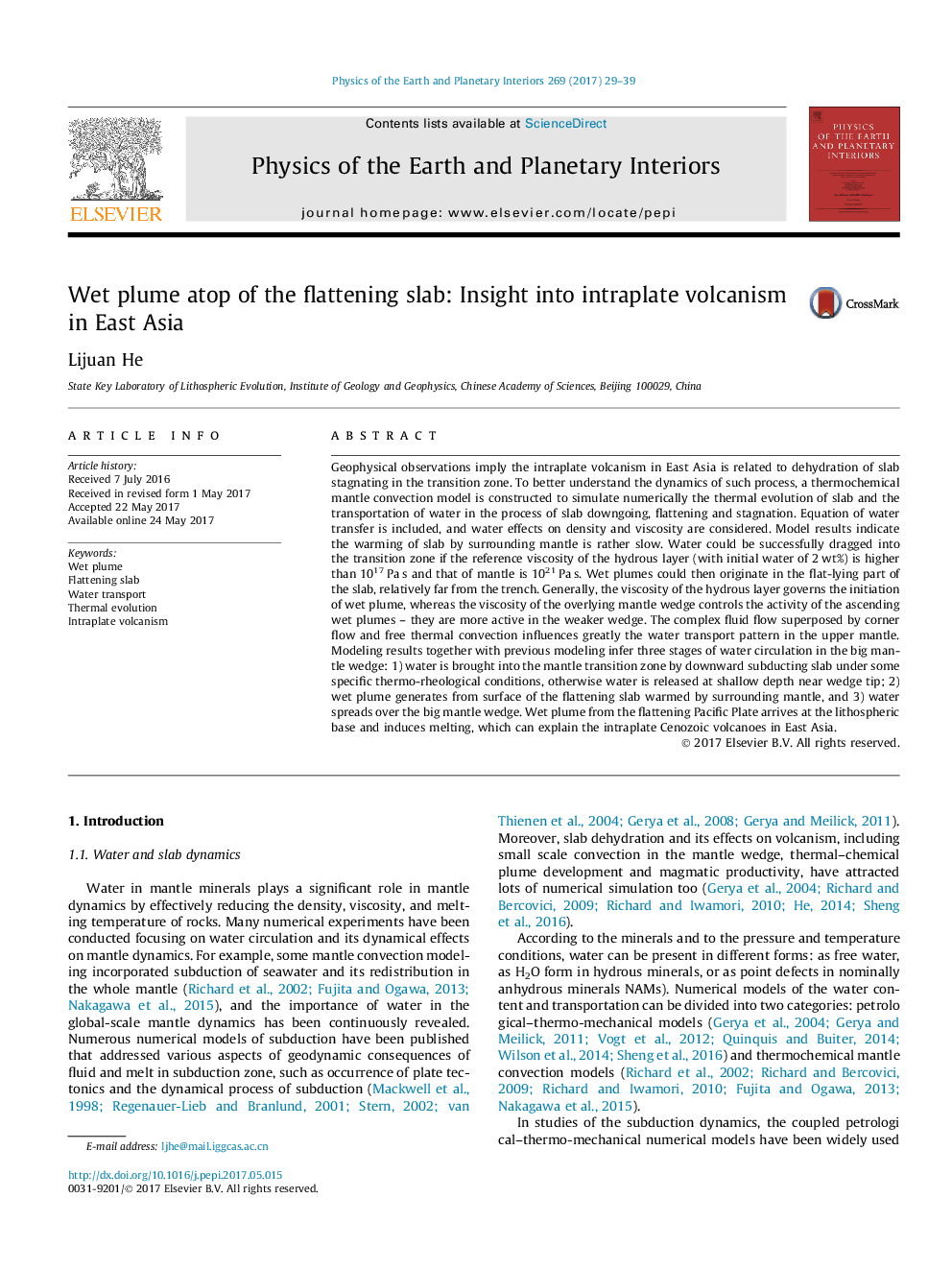| کد مقاله | کد نشریه | سال انتشار | مقاله انگلیسی | نسخه تمام متن |
|---|---|---|---|---|
| 5787298 | 1641471 | 2017 | 11 صفحه PDF | دانلود رایگان |
- A thermochemical model is constructed to model the water transport in the process of slab flattening.
- Water can be brought and released in the transition zone by slab under specific conditions.
- Water transport behavior depends on the viscosity contrast between the hydrous layer and o mantle.
- Melting at the lithospheric base by wet plume from flattening slab can explain the intraplate volcanoes.
Geophysical observations imply the intraplate volcanism in East Asia is related to dehydration of slab stagnating in the transition zone. To better understand the dynamics of such process, a thermochemical mantle convection model is constructed to simulate numerically the thermal evolution of slab and the transportation of water in the process of slab downgoing, flattening and stagnation. Equation of water transfer is included, and water effects on density and viscosity are considered. Model results indicate the warming of slab by surrounding mantle is rather slow. Water could be successfully dragged into the transition zone if the reference viscosity of the hydrous layer (with initial water of 2 wt%) is higher than 1017 Pa s and that of mantle is 1021 Pa s. Wet plumes could then originate in the flat-lying part of the slab, relatively far from the trench. Generally, the viscosity of the hydrous layer governs the initiation of wet plume, whereas the viscosity of the overlying mantle wedge controls the activity of the ascending wet plumes - they are more active in the weaker wedge. The complex fluid flow superposed by corner flow and free thermal convection influences greatly the water transport pattern in the upper mantle. Modeling results together with previous modeling infer three stages of water circulation in the big mantle wedge: 1) water is brought into the mantle transition zone by downward subducting slab under some specific thermo-rheological conditions, otherwise water is released at shallow depth near wedge tip; 2) wet plume generates from surface of the flattening slab warmed by surrounding mantle, and 3) water spreads over the big mantle wedge. Wet plume from the flattening Pacific Plate arrives at the lithospheric base and induces melting, which can explain the intraplate Cenozoic volcanoes in East Asia.
Journal: Physics of the Earth and Planetary Interiors - Volume 269, August 2017, Pages 29-39
